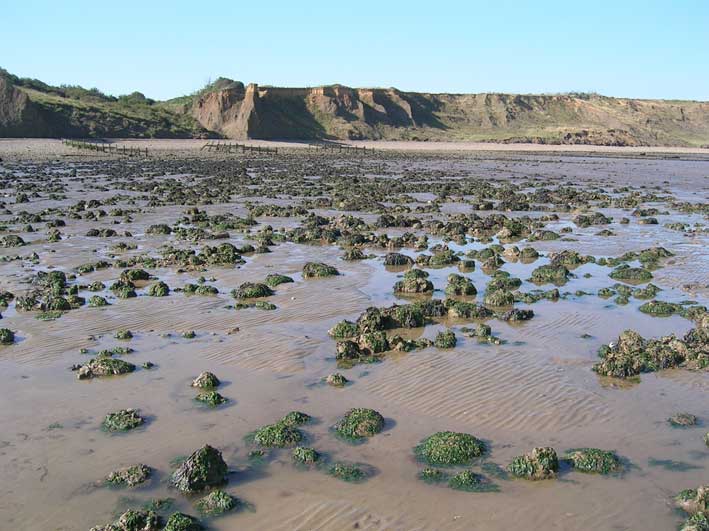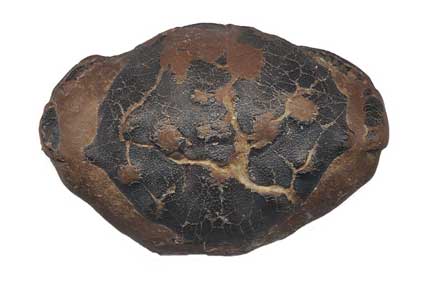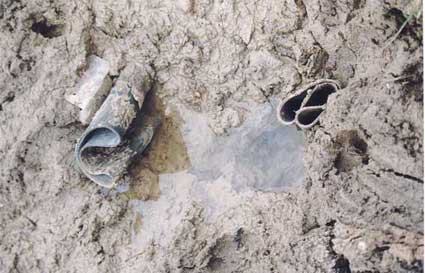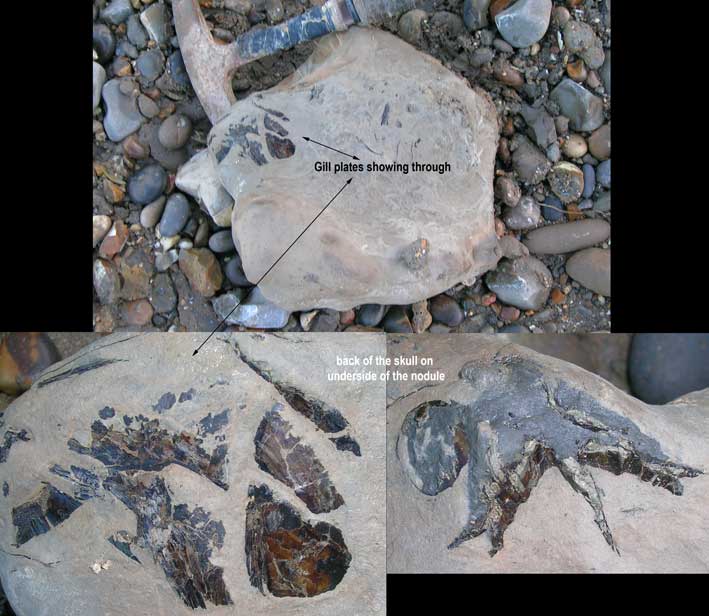 |
||
|
Contrary
to the information supplied by some websites describing the techniques
for collecting, the foreshore between the bottom of the beach and the
low tide mark is not a dangerous place. There is no quicksand here,
only the same clay as in the cliffs, very solid but slippery. Make sure
that you have a good tread on your boots. In fact it is the cliffs that
are dangerous in winter or after a prolonged wet spell. Check out the
image below right. The collector who left these boots was very lucky
as the wet mud slurry that runs down the cliff can be several metres
deep. In the picture above the clay is covered with silt. This is a
lee shore for the most part and silt covers the clay for the best part
of the year. During the winter months the silt can be taken off by Northerly
winds and then the collecting really hots up because the best quality
fossils are found on these foreshore exposures. However fossils are
more widely distributed and harder to find as one must cover much more
of an area to find them. The rocks that you see are the cement stone
septaria in situ where they have eroded from the clay.
|
||
 |
|
 |
|
Crab
nodule found on the foreshore at paddies point. The red colouration
is due to the suffussion of pyrite throughout the nodule.
|
Boots
stuck in mud on the cliffs.
|
|
|
Fossil fish in Septarian nodule found on the beach. Fossils in cement stones are exceptionally rare and are notoriously difficult to prepare as the layers in the cement stone resemble an onion skin with hard veins of calcite running through. However when found they are usually very beautiful. Crabs, shells and starfish have been found on and in cement stones. Turtles, crocodiles and nautili are usually found in this way. |
||
 |
||
|
|
||

